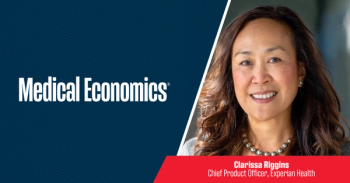
Primary Care First program is less burdensome, but experience required
Fewer hoops overall and multiple financial bonus opportunities
Following up on its Comprehensive Primary Care Plus (CPC+) program, the Centers for Medicare and Medicaid Services (CMS) released in April the details of another phase of its value-based care Primary Care Initiatives: Primary Care First (PCF). Before you roll your eyes at yet another bureaucratic pay-for-performance program from CMS, read on. This one may be worth your time.
The main reason for participating in PCF is it rewards physicians with strong financial incentives despite significantly reducing administrative burden. Unlike the Electronic Health Records (EHR) Incentive Programs, better known as Meaningful Use, or even the Merit-based Incentive Payment System (MIPS), PCF requires minimal performance measure tracking and reporting, and offers greater flexibility and transparency. The main quality and cost improvement objectives in this program are essentially rolled into one outcome: reducing acute hospitalization utilization (AHU).
Like every CMS program, however, there are caveats. The first warning is the penalty for underperformance on AHU. The second caveat is only practices with documented value-based care experience need apply. The final warning is that while the reporting burden is low, practices should have data analytics technology implemented that helps them stratify their patients’ risk levels and manage hierarchical condition category (HCC) codes. Using a population health platform or other software to reliably perform this analysis is not required for participation but will make achieving PCF success much more achievable.
Some Experience Required
PCF is a five-year program, beginning in January 2020, with multiple ways to earn financial incentives, including the practice’s unique patient-population health risk qualities. Because risk adjustment and HCC codes are important elements of the program, CMS has presented PCF as the next step in the evolution of the CPC programs. Physicians participating in CPC+ will need to wait until 2020 to apply for PCF participation starting the following year.
Only practices with other value-based care program experience, such as participating in a Medicare Shared Savings Program (MSSP), Managed Medicaid or another risk-bearing or capitated payment program with a commercial health insurer, are eligible for PCF. The program will run in 26 states and regions throughout the country when evaluation starts in 2020. Although many high-population areas of the U.S. are included, physicians will need to confirm they are practicing in an eligible geographic area
Risk Measurement Essential
If the physician has documented value-based care program experience and is practicing in an eligible region, he or she can apply for the PCF program this year. Accepted physicians will receive a flat visit fee per face-to-face encounter with each beneficiary. CMS is supplementing the face to face visit fee with a population-based payment based on a collective, average HCC score for the practice’s attributed beneficiaries. The practices with the lowest of five average HCC risk scores (Risk Adjustment Factors) receive an additional per-beneficiary-per-month payment of $24, while the highest-risk patient population practices receive $175 per beneficiary per month.
On top of that payment, CMS is awarding performance-based bonus payments (which it calls adjustments) in the first year based on only one factor: AHU. The AHU benchmark is the lowest quartile performers from a national reference group and is entirely based on claims data. One quality measure to track is a welcome relief from the many required metrics under Meaningful Use and MIPS. Practices that do not achieve that benchmark, however, receive a 10% penalty on their PCF payments and are ineligible for most other types of bonus payments included in the program.
For the performance-based payment, AHU remains for the duration of the program. CMS is also including a cohort adjustment based on performance against other PCF participants where the practice can earn a bonus of as much as an additional 34% of its total payment if a top performer in AHU. Practices that do not achieve the AHU benchmark are ineligible for the cohort bonus. There is also a Continuous Improvement Adjustment where practices can earn as much as a 16% bonus if they achieve an improvement target, including the AHU, which means practices that fail at achieving that metric can earn some of the penalty back if they improve over the previous year. In years 2 through 5, payment rules become a bit more complicated, but should not be difficult for practices with experience in HCC codes and risk management. Starting in year two, CMS will institute a Quality Gateway based on previous year’s performance against a set of five measures. The other care quality measures are:
· Patient experience survey score
· HbA1c of less than 9%
· Controlling hypertension
· Colorectal cancer screening
· Advance care plan
Practices in the two highest HCC-risk-score groups are exempt from the diabetes, hypertension and cancer screening quality scores.
Simplify Participation
CMS programs are notorious for leaving physicians in the dark on their current performance, which makes it impossible to improve until after a rating period ends. With PCF, the agency has indicated in webinars that they are committing to provide data to help participants gauge performance against peers so they can drive improvement during the rating period.
Interpreting that data may be a challenge, especially if CMS delivers a data dump as it is known to do. Having a population health management technology partner able to harness the CMS data and provide highly customizable and personalized performance reports on any of the cohort performance or care-quality rating criteria is a time-savings essential.
Additionally, a population health management platform should easily deliver relevant reporting on patient risk and its associated HCC codes. An accurate assessment of the practice’s risk level is needed to estimate ongoing financial performance earnings under PCF. Such technology should also be able to identify care gaps among these patients that can help physicians prevent an acute hospitalization and improve the applicable quality metrics for the later years of the program.
Practices that have participated, or are participating, in other CMS value-based care programs may be wary of applying to join another, which is an understandable concern. PCF, however, distinguishes itself with its simplicity and strong financial incentives for practices that deliver superior care to complex patients. By following a practice’s established value-based care processes aided by easy-to-use technology, physicians can achieve the program’s ultimate goals of helping patients stay away from the hospital and toward achieving optimal outcomes.
About the author:
Kent Locklear, M.D., is Chief Medical Officer of
Newsletter
Stay informed and empowered with Medical Economics enewsletter, delivering expert insights, financial strategies, practice management tips and technology trends — tailored for today’s physicians.



















